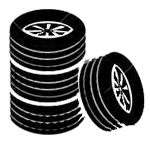What is rev matching?
Rev matching, an often-discussed technique amongst drivers of manual transmission vehicles, is a process designed to smooth gear changes and protect the drivetrain from unnecessary wear. Despite the fact that many modern vehicles now offer automatic rev-matching systems, understanding the intricacies of this technique can be beneficial for those seeking a deeper connection with their vehicle.
In essence, rev matching involves synchronizing the engine speed (RPM) with the rotational speed of the transmission's input shaft before a downshift. This harmonization prevents the vehicle from lurching and mitigates the stress on the clutch and transmission. The procedure may sound complex, but let's break it down.
To perform a rev-match, you're going to follow a slightly altered sequence from the standard shift. First, depress the clutch and shift into neutral. Now comes the magic: blip the throttle to increase the engine RPMs, essentially 'revving' the engine. Your aim is to match the engine's speed to that of the lower gear you're about to engage. Once you've achieved this, depress the clutch again, shift into the lower gear, and release the clutch. The result should be a much smoother shift, without the jarring jerk that can accompany a poorly executed downshift.
However, it's important to draw a distinction here. Rev matching is not the same as double clutching ( What is double clutching? ). While they both involve manipulation of the engine's RPM during a shift, double clutching is a more involved process, specifically used for older, non-synchronized transmissions. Rev matching, on the other hand, is primarily used during downshifts in modern manual transmission vehicles to improve the smoothness and longevity of the drivetrain.
QA #502
Last Updated:
2023-05-23 10:17







